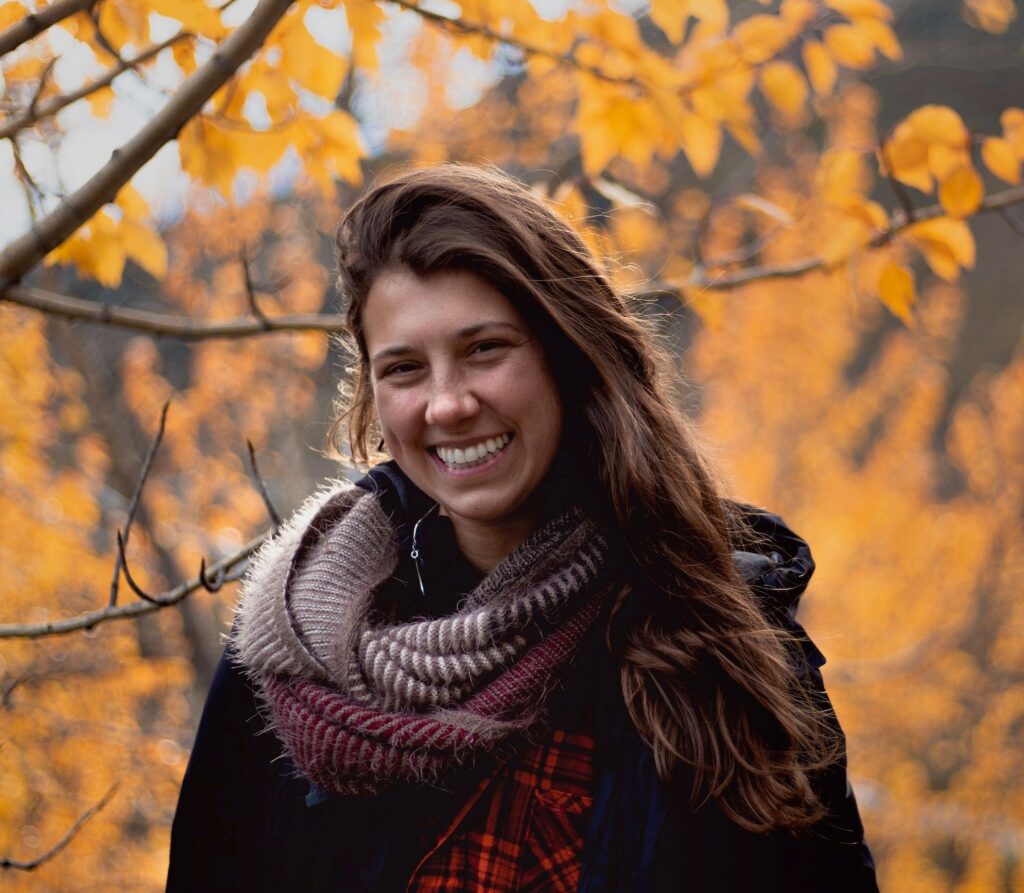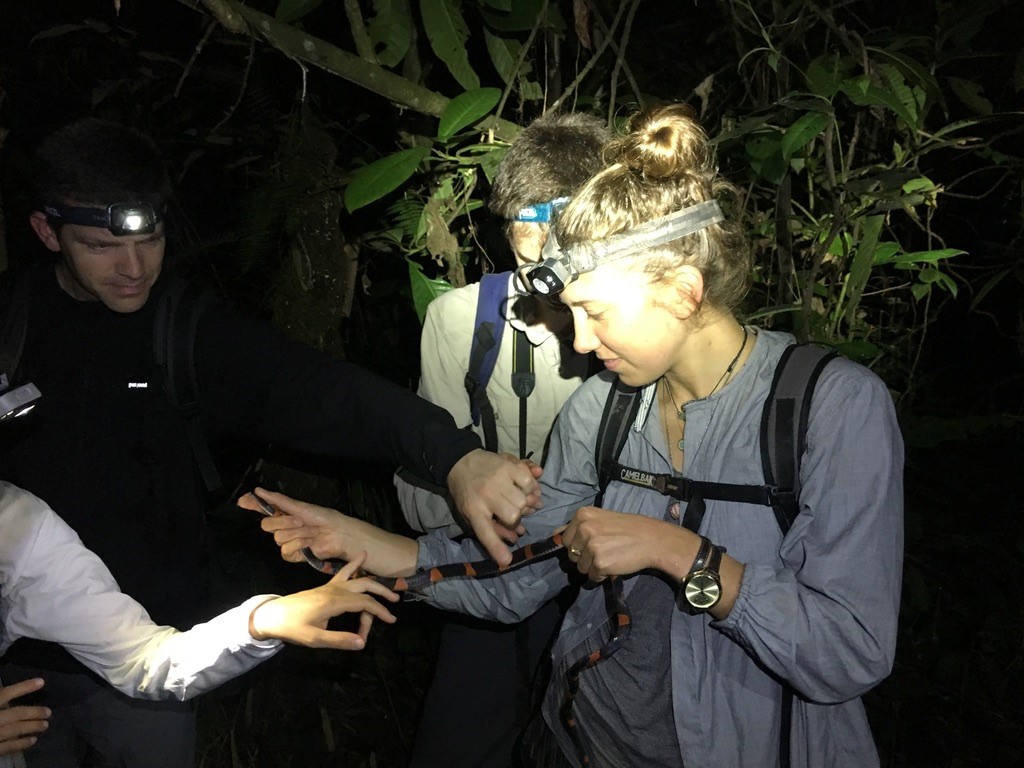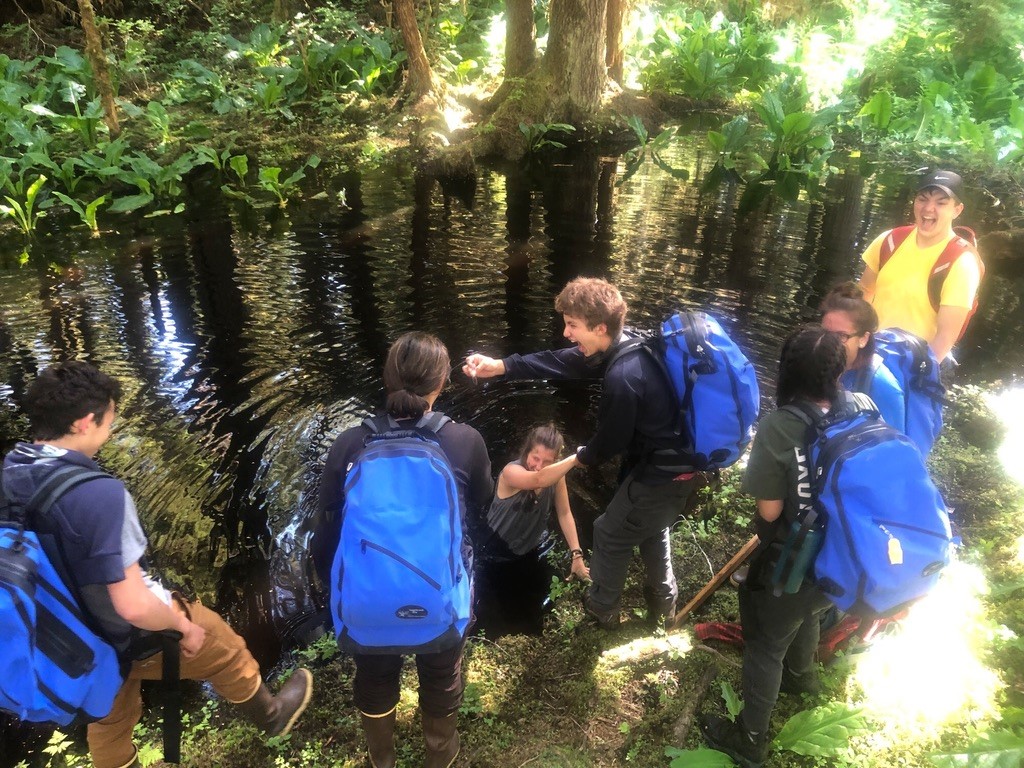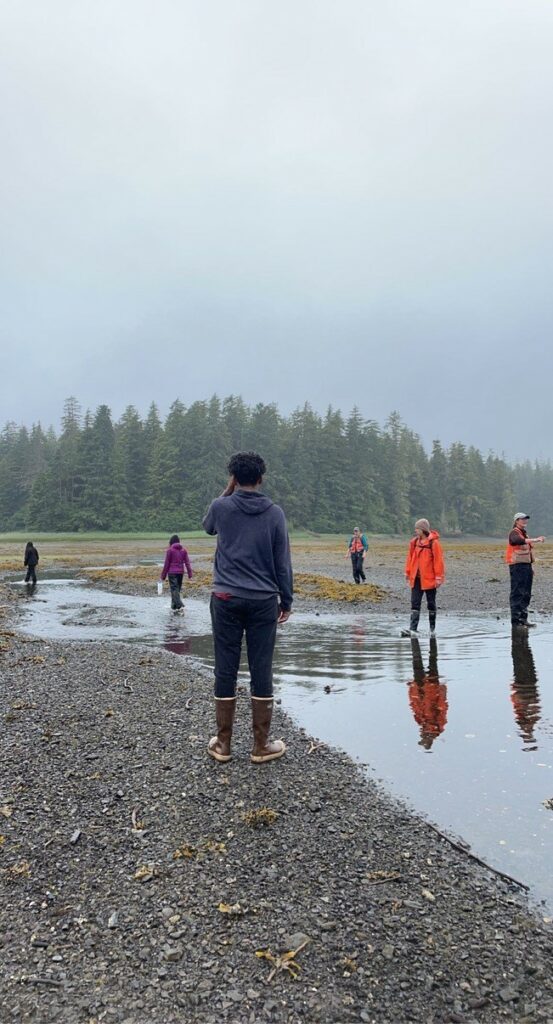As a part of the Western Collaborative Conservation Network’s Capacity Building Working Group, the Emerging Leaders Initiative works to support individuals by connecting them with mentors, one another, and resources that create career and professional development opportunities and empower change.
“Emerging leaders” are individuals new to the conservation field with an innovative vision for the future of conservation work and the motivation, passion, and collaborative mindset to work toward that vision. In this profile series, we’re featuring some of these emerging leaders to hear about their passions, the challenges they’ve faced entering the field of collaborative conservation, and their ideas for the future.
To find out more about the Emerging Leaders Initiative, contact Travis Anklam at travis.houle@umconnect.umt.edu.
Audrey Clavijo is a graduate student in Colorado State University’s Conservation Leadership program and an intern with the Center for Collaborative Conservation. We asked Audrey to share her experiences working in the conservation field, her perspective on the challenges emerging leaders face, and opportunities for others in the field to support these individuals.
—

Audrey Clavijo knows how to market her skillset. Deciding to stray from her undergraduate education in nutrition, French, and theater to pursue a conservation career, Audrey learned about a biological research station in the Manu Rainforest of Peru. They didn’t have any job openings at the time, but that didn’t stop her.
“Basically, I just traded my skills,” Audrey said in a recent conversation with the Western Collaborative Conservation Network. “I told them, ‘I can teach English. I can teach yoga. I can do nutrition science for you. I can do anything in my resume that you’re interested in. In return, I want to learn everything about what your biologists are doing with conservation work in this station.’ I did that for about 5 months, and then they hired me on as full-time staff.”
Audrey’s adaptability, initiative, and willingness to grab opportunities are just some of the things that put her in the category of an emerging leader. The 28-year-old is currently a master’s student in the Conservation Leadership program at Colorado State University—a degree that develops applied knowledge, leadership skills, and collaboration techniques so individuals can help create sustainable, stakeholder-driven conservation projects. She is also working as a communications intern at the Center for Collaborative Conservation.

While education will help her move forward, her passion for conservation and community work will take her even further.
During her time in South America, Audrey became interested in working with Native communities having seen Indigenous peoples in Peru celebrating their cultures and traditions. She realized she was unaware of anything similar in North America. Growing up in Georgia, she said, Native Americans were portrayed only as history instead of as active communities.
She got a job with the Student Conservation Association working with Native communities in Kake, a village in southeast Alaska. After her term was done, she wanted to make sure the organization’s work on Native stewardship, youth development, capacity building, and outdoor education kept going.
“This program was still quite young and really at the whims of if they were going to get funded,” she said. “I felt really passionate about protecting the longevity of the program.”
She found herself trading her skills, just as she did at the biological research station, writing a proposal on how to stabilize the program’s funding. After spending a winter writing grants, she moved on to run a one-woman, bare-bones consulting business for environmental education, working mostly with the Alaskan Youth Stewards Program.

“Conservation is such a huge field, and there are so many organizations that need so many hats to be filled,” she said. “My biggest key for people looking to get into conservation is, no matter what you’re proposing, offer it. Offer your skills. It’s very possible they may have a place for you, and in return you’ll get the experience.”
Having gotten her fill of seasonal experiences and contract work, Audrey started looking for fulltime jobs. And even with her experience, she hit a wall.
“A lot of these jobs needed a master’s degree,” she said. “It was a double-edged sword. I felt like I had a lot of experience and a lot to offer, but I didn’t have that paper credential to say that I had that experience in an academic way.”
Audrey said she’s thankful that she has the opportunity to pursue a master’s degree to get the education-experience combination conservation organizations are looking for as it’s not an option available to everyone.
She feels similarly about her past work experiences, especially those in Peru. Audrey said she started with an advantage. While her work ethic got her a full-time position at the Peruvian research station, she said she wouldn’t have known about the opportunity without her family connections in Bolivia. And without that experience, she wouldn’t have been able to work in Kake, Alaska.
Audrey feels the types of leadership experiences she’s had should be more open to others, especially those who don’t have connections early in their careers.
“We need, as conservationists, to take a risk on young people and give them the benefit of the doubt,” Audrey said. “See if they can do the work. Teach them. Help create these emerging leaders.”
There is another element that Audrey attributes to her success in taking a hold of opportunity and gaining experience: a mentor.
“She has given me so much advice each step of the way of graduate school, of trying to publish a paper with her, of learning different research methods,” Audrey said of her mentor, Di Johnson, whom she met in Alaska.
From getting general advice to helping form needed professional connections, Audrey said having a mentor has been key in her entering the conservation field.
“If you are an older professional, take on a mentee because it might be the most rewarding thing that you do and the most beneficial thing that this young, emerging leader can have,” she said. “Your advice may seem like old news to you, but it can be a lot of wisdom for a young person. It can also be really nice to just quell someone’s fears about taking some big steps in the beginning of their professional career.”

Having taken some big steps already, Audrey will spend her summer working on watershed health issues with Trees, Water, and People in Honduras to complete her graduate degree. From there, wherever her career path wanders, she hopes to continue partnering with Native communities throughout the Americas.
As a parting thought, keeping in mind the importance of resource sharing among emerging leaders, Audrey offered a resource for those looking to learn about collaborative conservation in Alaska: the Sustainable Southeast Partnership (SSP), a conglomeration of groups and individuals working to address social, environmental, and economic challenges through collaboration.
“There are amazing groups of people doing collaborative work all over the world and we just have to dive in and find them,” Audrey said in thinking of the SSP. “I think, for emerging leaders, that can be a great means to network, to get yourself involved in opportunities, and to know about the different conservation initiatives that are taking place, especially the ones that are being worked on collaboratively.”
—
Share your thoughts and engage in a conversation about this piece using our Western Collaborative Conservation Network listserv
.
